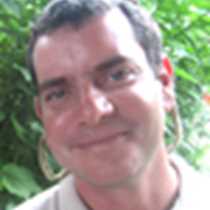Today we started our day in the northern hemisphere. After a long navigation we ended at a very special part of the archipelago, Genovesa Island, the “bird Island.” In the morning we visited Darwin’s Bay in the caldera of Genovesa. We landed for a hike on a white sandy beach formed by eroded pieces of broken coral. The landscape was incredible, the island was an explosion of wildlife: red footed boobies, Nazca boobies, frigate birds, swallow tailed gulls, herons and finches were everywhere. Genovesa holds the largest density of birds of any island in the Galapagos. It was a real privilege to visit this place surrounded by mangroves and spectacular cliffs made of basaltic lava rocks.
Later in the morning we got the chance to get in the water for our last contact with the marine environment of the Islands. The conditions were not easy, the sea was choppy and the water visibility was less than 30 ft. In the water, the story was different. We enjoyed the presence of a great diversity of reef fish that included species found in the indo pacific, such as Moorish idols, parrot fish, king angel fish, damsel fish and even a solitary scalloped hammer head shark—it was a real adventure.
In the afternoon we visited a different location on the other end of the caldera, known as Prince Phillip’s Steps. In this place we spotted many of the same species of birds found the morning, but with very different scenery. Palo Santos, saltbush and walteria dominated the landscape. After crossing a territory inhabited by Nazca boobies we got to a place where two short eared owls were spotted. Then, the trail took us to the outer part of the caldera, where the prevailing trade winds hit the island on its southern end to attract tons of birds. On our way back to the disembarkation area, the colors of an astonishing sunset were our best companions for our last day in this piece of paradise on earth.







